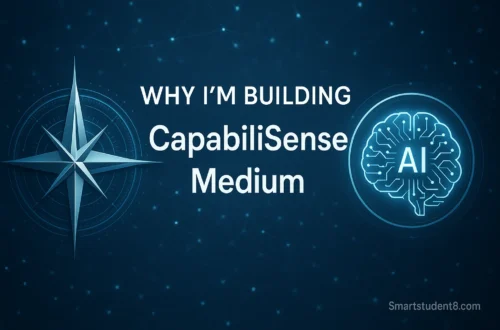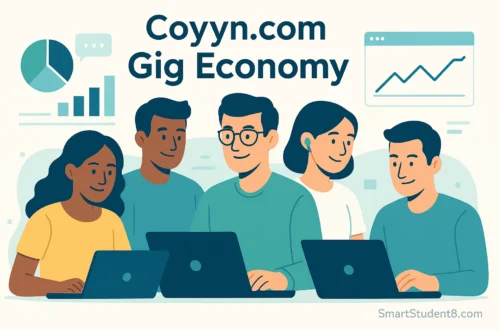The work environment is changing. Team members are located in different places, the technology advances rapidly, and they expect more from their jobs than a simple paycheck. People want to be supported, have flexibility, and find a purpose. Management styles of the past, with rigid hierarchies and commands from above, are no longer effective. Here’s where we need a fresh approach–one which balances humanism with structure. Management Guide EWMagWork is a framework that has been designed specifically for the new era. The Management Guide EWMagWork is more than just management tools. It’s an approach that integrates enterprise-level workflow management, agile principles, and emotional intelligence in leadership. The guide helps organizations create systems that not only are efficient but also deeply human. It empowers teams to feel valued and motivated while doing their best work.
The guide was designed as a resource that you can use to understand and implement EWMagWork. The five pillars that form the foundation of EWMagWork will be explored, as well as a simple 90-day plan for getting started. It’s been my experience that traditional methods can burn out talented employees and stifle their creativity. In my years managing teams and projects, I have learned that successful companies are those that prioritize performance as well as people. EWMagWork represents the culmination and application of all these lessons. It offers an approach that is balanced, allowing for results to be achieved without harming employee satisfaction. This article will discuss its main features, contrast it with other methods, and examine real-world success stories.
EWMagWork Framework – Understanding
What exactly is the EWMagWork Management Guide, then? It’s obvious from the name: Enterprise Work Management, Agile Governance, and Workflows. The system brings enterprise-level clarity and structure while maintaining agile methods. It’s the ideal blend between a reliable, sturdy blueprint and the capability to change that plan as needed. I’ve seen many companies struggling with either extreme: they are rigid and unable to respond to the changes in the market, or “agile”, but they end up in chaos, with no accountability. EWMagWork is able to bridge this gap. This system provides the organization tools needed to handle large-scale operations while empowering teams to adapt and be flexible. The approach promotes high performance and accountability, resulting in improved workflow and higher productivity.
Adopting EWMagWork is a great way to improve workplace efficiency. EWMagWork’s core purpose is to improve workplace efficiency through streamlining and eliminating redundant processes. Companies report significant improvement in project completion and bottleneck reduction. This approach cultivates greater employee engagement. Motivation soars for people who feel their leaders support them and understand their contribution to the larger picture. It also encourages better collaboration. This helps to break down departmental barriers and ensure teams are working together towards the same goals. In the end, this framework enables leaders to rely less on guesswork and more on data to drive their strategies. A holistic approach to business creates an organization capable of adapting and thriving.
EWMagWork: The five pillars
EWMagWork’s Management Guide is built upon five pillars that are interdependent. The five pillars are not abstract concepts, but rather practical principles that guide everyday actions and decisions. To unlock the full potential of this framework, you must master these concepts.
1. Strategic Alignment
This Pillar ensures that each task, project, and initiative has a direct connection to the overarching organizational goals. Answering the question “why?” behind work is key. Employees’ work becomes meaningful when they can clearly see a link between their daily tasks and the mission statement of the business. The goal is not to micromanage, but rather to provide context and purpose. The team will be more focused and motivated if they understand their role in the bigger strategy. They can also make better decisions for the company.
2. Leading with Emotional Intelligence
The management process is much more complex than tracking data and assigning jobs. Leadership is about understanding people and connecting. This pillar helps managers develop active listening skills, empathy, and psychological safety. An emotionally intelligent leader creates unshakable trust. Team members can voice their concerns, exchange ideas, or even make mistakes with no fear. The trust that is built is crucial to a high-performing, healthy team. It is also essential to fostering employee engagement.
3. Transparent Workflows
Confuse the workers and they will not be productive. This pillar is focused on making the work visible. With tools such as Kanban Boards, digital dashboards, and shared project plans, teams can track the progress of their tasks, understand dependency patterns, and spot potential bottlenecks. The transparency of this system eliminates any guesswork. It also ensures that everyone on your team is working together. The team feels more accountable and shared ownership because they can all track their progress.
4. Automation and Analytics
Manual tracking, gut instinct, and intuition are things of the distant past. EWMagWork integrates the latest technology to automate mundane tasks and provides deep insights into performance. Automation of workflows frees time that can be used for strategic projects, while dashboard analytics provide data in real-time on the health and productivity of projects, as well as resource allocation. Leaders can use this pillar to predict issues and identify trends. They are also able to make better decisions.
5. Sustainable Governance Rhythm
The cadence established by this pillar is consistent for all check-ins. The goal is to create a consistent rhythm for everyone that doesn’t resort to micromanagement. Weekly team syncs and monthly reviews of progress could accompany the daily stand-ups. It ensures progress is consistently measured, that feedback is regularly exchanged, and that the team is agile enough to change its course as needed. The rhythm strikes the right balance between autonomy and oversight.
Use this 90-day road map to implement EWMagWork.
It cannot be very comforting to adopt a new framework for management, but using a phased method makes it more manageable. The 90-day road map has proved to be a successful model. I have guided many organizations in this process. The 90-day roadmap allows for learning and adjustment as well as building momentum with early wins.
Days 1-30: The Diagnostic Phase
First month, it’s all about assessment. It’s impossible to fix something you don’t know. In this phase, the leaders must conduct an in-depth review of current workflows. Interview team members across departments to better understand their challenges, pain points, and communication issues. Now is the perfect time to gauge the emotional intelligence of managers. Surveys or workshops can be used to pinpoint areas where leadership skills need improvement. To create a clear benchmark, you must identify which areas are most important and prioritize them.
Days 30-60: The pilot phase
After defining the issues, it is time to start testing EWMagWork at a smaller level. You should select one or more pilot teams that are flexible and open to changes, but also represent the organization as a whole. In this phase, you will introduce the core EWMagWork practice. Then, map out the workflows of each team, assign roles and responsibilities based upon RACI’s (Responsible. Accountable. Consulted. Informed) framework, and implement agile governance procedures like stand-ups every day and weekly reviews. Train these teams on the tools and new processes. Pilot phase: This is an opportunity to learn, test, collect feedback, and improve your process before you go full-scale.
Day 61-90: The Expansion Stage
It’s now time to scale up. Once pilot teams show promising results (better collaboration and communication, higher productivity, etc.), it is the right time. The pilot’s successes and learnings can be used to support a wider adoption. Start implementing the best practices in other departments. As well, this is the time to introduce advanced technologies, like integrated dashboards or automated alerts, in order to increase visibility and drive data-driven decisions. Build a comprehensive program of training for employees and managers. Also, create an internal support system that includes champions.
EWMagWork – Real Success in the Field
Results are important, not theories. Several organizations from different sectors have implemented the principles behind EWMagWork, and they’ve achieved some remarkable results. CloudServe Inc., a midsized technology firm, struggled to meet deadlines, and its developers were burnt out. Twelve development teams worked in four separate offices. The EWMagWork Framework enabled them to connect these teams via transparent workflows and an effective governance rhythm. Within a quarter of adoption, productivity metrics increased 37%. Project delivery times decreased by 30%. In addition, the introduction of training in emotionally intelligent leadership led to a significant drop in employee turnover.
The healthcare industry is a powerful example. Memorial Regional Hospital had to lower administrative overheads to let staff focus on patient care. EWMagWork was deployed to 1,200 staff, automating administrative tasks and clarifying their roles. In the past, administrative tasks used to consume 15 hours a week. Now they take less than 4 hours. Overhead costs were reduced by $1.2 million, and patient satisfaction increased 22% in six months. These examples show that EWMagWork, despite its corporate name, is a system with real-world results.
Adoption Challenges and Solutions
EWMagWork implementation is not an exception. The most common obstacle is the resistance to change. Even managers and employees may feel comfortable doing things the way they have always done them and be wary of any new process. The challenge of finding a balance is also to find the best way to combine the structure, the data-driven side, and emotional intelligence. Some leaders might gravitate to one aspect and neglect the others.
To overcome these obstacles, communication, training, and patience are key. Leaders should clearly communicate the “why”, explaining the benefits of EWMagWork to the organization and employees. As outlined in the plan for 90 days, a phased implementation helps minimize feelings of overwhelm. Celebrating small successes in public will help boost momentum and demonstrate the importance of the system. In addition, it is important to provide proper training both for employees and managers. Finally, the leadership should model desired behavior, especially emotional intelligence. The journey of cultural transformation, which is not just a sprint or a quick fix, requires consistent efforts to ensure success.
EWMagWork and Traditional Management Methods: The traditional management methods
EWMagWork is innovative, but it helps to understand this by comparing it with traditional management methods. These models often feature rigid hierarchies, top-down decision making, and a focus on individual performance. Although these methods provide stability, many times they often fall short of the demands in today’s dynamic business environment.
Compare the two:
| The Feature | Traditional Management | EWMagWork Framework |
|---|---|---|
| Structure | Roles and roles are rigidly defined | Flexible roles that adapt to changing situations with accountability |
| Decision-Making | The centralization of the top-down approach | Data-driven, collaborative, and decentralized |
| Focus | Output metrics and individual performance | Strategic alignment, collaboration with team members, and outcomes |
| Leadership Style | Directive, command-and-control | Coach-oriented and supportive |
| Communications | Notifications on a formal, need-to-know basis | Transparent, open, and Continuous |
| Flexibility | Resistance to change | Built for agility and Continuous Improvement |
| Technology Use | Tools that track data in silos | Integrating systems of automation, analytics, and workflow optimization |
This table illustrates the shift in perspective that EWMagWork is making from a rigid, machine-like approach to the organization towards a more human-centered and organic one.
Future Workplace Management
Work will evolve, and so must management frameworks. The future of workplace management points toward even greater integration of artificial intelligence, hyper-personalization, and a focus on sustainability. AI-driven insight will be more prescriptive, pointing out not only current bottlenecks, but also future challenges and possibilities. Physical or digital workspaces will adapt to each individual’s preferences and needs, enhancing productivity. EWMagWork and other frameworks will incorporate more sustainability goals to help companies manage their social, environmental, and financial impact. EWMagWork’s principles of adaptive governance and emotional Intelligence are ideal for adapting it to these trends.
Read More: Frehf: The New Language of Digital Innovation and Creativity
The Conclusion: A Human and Efficient Approach to Work
Management Guide EWMagWork – more than a collection of rules, it is a new paradigm in productivity, leadership, and collaboration. The framework connects agile flexibility with enterprise structure and emotional intelligence to help organizations become more effective, resilient, and people-centered. The framework addresses core requirements of modern work environments: clarity, alignment, adaptability, and the human need to connect and be valued. The guide will be a valuable resource for leaders who want to build an organization with enduring performance and a strong foundation. The guide equips leaders with the right mindset, the necessary tools, and a road map to help them create an environment where the company and their employees can thrive.





